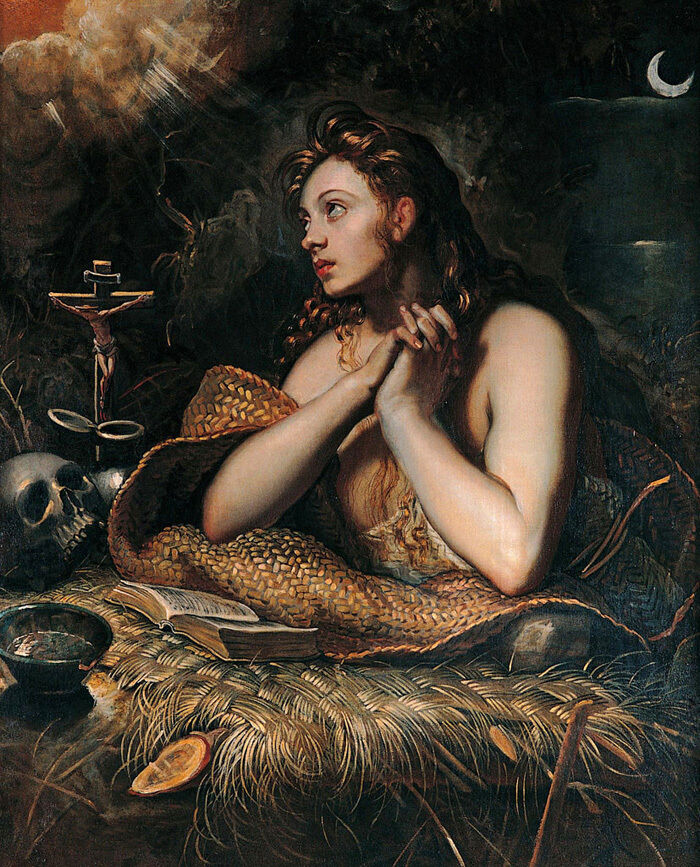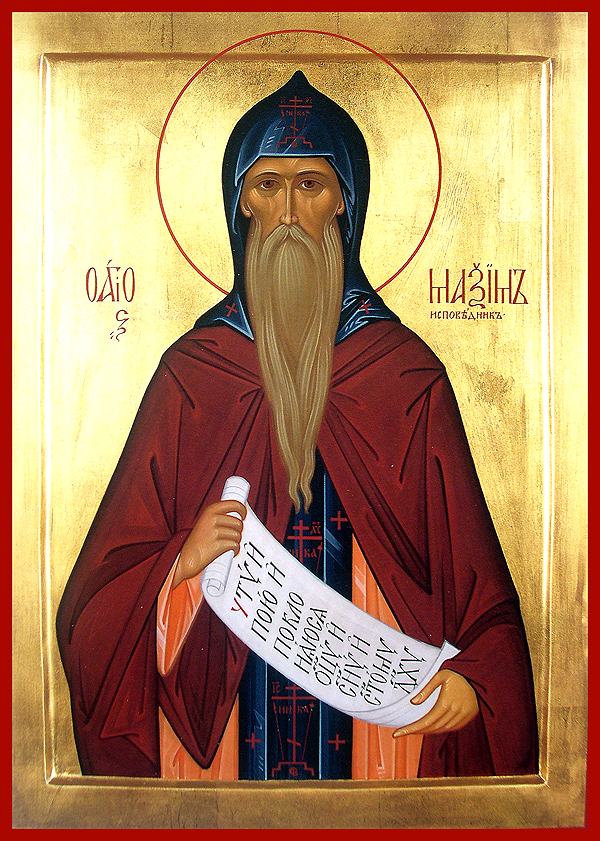This Easter morning, over a billion Christians will take themselves to their worship center and give thanks for the resurrection of Jesus Christ. For Christians, this is the most holy of holidays. “Rejoice! Rejoice! Christ has Risen! Indeed, he has risen!” Without hesitation, the various testimonials of that Easter morning will be read aloud and venerated. In the New Testament, we have four confounded and conflicting accounts of exactly what happened. As the biblical scholar, Dr. Bart Ehrman famously implies in his lectures, “it depends which gospel you read.” Today, that quote does have some truth. There is quite a lot to choose from (Mark 16; Matthew 28; Luke 24; John 20-21). More independent groups will go with whatever their preacher instructs them to worship or read. What they will ALL miss, in my view, is the following.
Etched deeply in the clandestine traditions of church history is the following ten verses that appear to be the earliest narrative that is taken from the Gospel of John, which, consequently, has been undermined and swept over for more favorable conditions of how most folks interpret the Easter tradition. Surprisingly, these pieces of information are from our latest gospel. (John is dated to around A.D.90; it is the latest of narrative.) I find this to be immensely compelling! I will explain why.
“Early on the first day of the week, while it was still dark, Mary Magdalene went to the tomb and saw that the stone had been removed from the entrance. 2 So she came running to Simon Peter and the other disciple (we don’t know which disciple), the one Jesus loved, and said, “They have taken the Lord out of the tomb, and we don’t know where they have put him.” 3 So Peter and the other disciples started for the tomb.4 Both were running, but the other disciple outran Peter and reached the tomb first.5 He bent over and looked in at the strips of linen lying there but did not go in.6 Then Simon Peter came along behind him and went straight into the tomb. He saw the strips of linen lying there,7 as well as the cloth that had been wrapped around Jesus’ head. The cloth was still lying in its place, separate from the linen.8 Finally the other disciple, who has reached the tomb first, also went inside. He Saw and Believed.9 (They still did not understand from Scripture that Jesus had to rise from the dead.) 10 Then the disciples went back to where they were staying.” (John 20: 1-10 NIV)
This is it! Short! To the point! Nothing elaborate going on! What the Gospel of John does NOT say is equally important of what it DOES say.
- No group of women arrive after sunrise.
- No men appear in white garments.
- No earthquake.
- No Roman guards at the tomb.
- Most important: NO APPEARANCES TO ANYONE!
At this point, Mary and Peter are convinced someone has stolen the body, not that Jesus has been raised from the dead! The text above is quite explicit. Now all of these “elements” do appear in the other three gospels; however, in the case of John, these ten verses stand alone! I am convinced that the ten verses above are of an INDEPENDENT embedded tradition that centered on the mystery of Mary Magdalene that was well known in the Johannine community! It is not a coincidence that John mentions her right away. In the first verse alone a sad Mary Magdalene, with her unique and special connection to Jesus, came alone that morning to weep for the Lord. The subsequent accounts in the other three narratives are all typical of the “myth-making” literary expansion and the theological embellishment 40 to 60 years after Jesus’ death; I would expect that these Christian communities began to bolster their faith in the face of skeptical opposition! This is precisely why the subsequent accounts have an “apologetic” tone to them with some “doubting” and more “proof” being offered that the sightings of Jesus were MUCH MORE than just apparitions! (And MARY is in the center of all of this; she is even the FIRST to see Jesus alive and to have dialogue with him! John 20:16)
Mark does not dispute that Mary Magdalene and the “other women” first discovered the tomb; however, his account is, by far, a much more expanded version of an earlier story, most likely an oral one, elaborated a bit further by Matthew, and radically recontextualized by Luke.
Matthew, clearly influenced by Mark’s gospel, has three mentions of Mary Magdalene, at the crucifixion, at the burial, and at the tomb in the morning. Mysteriously, she is paired with another “Mary” and does not name Peter.
Luke, also following Mark, makes clever changes to Mark’s structure; he too has women in Galilee, standing at the foot of the cross; however, astonishingly, names NONE OF THEM (Luke 23:49)! Consequently, at the burial, they are still not named. However, Luke names the women who arrived to complete the funeral rites of the burial: Mary Magdalene, Joanna, Mary the mother of James, and “the other women with them” (Luke 24:10). This unique structure of narrative by Luke is no coincidence; it has been carefully crafted. Earlier in his epistle he introduces Mary, back in Galilee, among a group of many women who provide for Jesus, picking up on Mark’s reference. However, the description of Mary changes dramatically. She, purportedly, has been cured by evil spirits and was possessed by seven demons! (Luke 8:1-3.) It is not a surprise that Luke presents these women with maniacal backgrounds; it should be acknowledged when reading this essay that the testimony of women in 1st century Palestine was COMPLETELY ancillary, even if they were telling the absolute truth! (Wrap your head around this for a moment.) Thus, Luke marginalizes Mary Magdalene’s reputation and credibility to make the MALE testimony of the resurrection more secure. (Luke 24:11)
There is a bit more to mention. Just before Luke makes the introduction of the possessed woman in Chapter 8, as followers of Jesus from Galilee, he plots a scene, in Galilee, of an unnamed woman who comes to Jesus with an ointment, weeps fearfully, and dries his feet with her hair. (Luke 7: 36-50) Jesus forgives her sins and she becomes his follower. Astutely, Mary Magdalene is introduced in the next passage. The juxtaposing is deliberate. Although Luke is not bold enough to write it down, this is, no doubt, the same person from his earlier material. Curiously though, Mark also tells us of a mysterious woman anointing Jesus; however, this episode occurs a few days before his death; she is honored not as a forgiven sinner, but one whose anointing has prepared him for his burial. (Mark 14:3-9)
Finally, this brings us back to the Gospel of John. I find his narrative the most compelling. As mentioned above, there are no elaborate and ornate scenes; they are no appearances; there are no Roman soldiers. This is an amazingly superficial description of something profoundly significant! Why is John’s light so dim on the resurrection scene? I don’t think that is the proper question. Like the other three gospel writers, John has his own motives to instruct and to convince his readers. He is relaying information to an audience that is completely different from that of Matthew, Mark and Luke. However, this is the genre of narrative where Jesus is clearly seen as God! It would make the most sense to put the other’s writer’s narratives of the resurrection in John’s gospel simply because of the divine status that Jesus clearly possess in it. But that didn’t happen. This is why it is so unique and why one can formulate an historical basis for the reliability of the resurrection itself. The dialogue between Mary and Jesus is the earliest reliable eyewitness testimony we have on that Easter morning! Remember, with no angelic messengers to proclaim the resurrection, and Mary not even told to go tell the rest that they too would see Jesus, it seems perfectly justified to give the Mary Magdalene account the most “original” credibility to that magical Easter morning. The historical tradition of the resurrection narrative by John stands alone, in my view. John’s “resurrection” narrative is not out to impress; I think that his readers are already aware of the divinity of Jesus; therefore, constructing such an elaborate story of the tombstone being rolled away and angels singing and messaging the followers is ancillary to John’s theological message. Much like today, early Christianity was QUITE diverse; many groups “believed” many different things about who Jesus was and what he did. They did not even have a Bible as we know it, (writing was an arduous task in 1st century Palestine and quite expensive) and they were constantly under severe persecution by a variety of cultures. (If you really want to read a glorious and creative account of the resurrection, see the Gnostic Gospel of Peter that was not included in the New Testament canon; trust me, it is worth the read!)
John’s gospel is brewing with intense originality! He is a man with a PROFOUND message to deliver! Later on, from these ten verses in Chapter 20, they will sprout into the larger account of his gospel with physical appearances that provide the scenes for the Easter morning that we are in association with. His mundane account of such a HUGE historical and theological event will culminate into the Easter traditions associated with ALL Christian denominations. Happy Easter!
(For the record, this essay is not intended to castigate or discredit the Gospel writers, nor is it an attempt to refute their historical or theological claims. I am just merely stating what I ‘believe’ to be the truth of Mary Magdalene’s role on that amazingly miraculous morning. Once again, all of the Gospel writers were possessed with motives for undermining and promoting certain accounts, traditions, eyewitnesses, prophets, and even themselves in serious situations, whether under the influence of Sola Scriptura or not! To present an HONEST account of the reliability of those ancient 1st century authors is ambiguous enough. My own theology has been omitted.)

© 2024, Mark Grago. All rights reserved.




